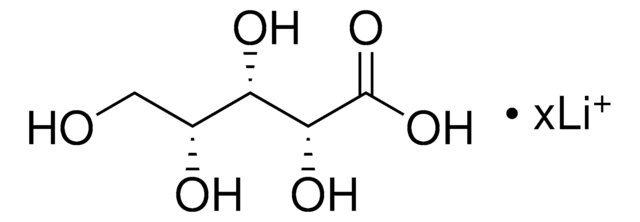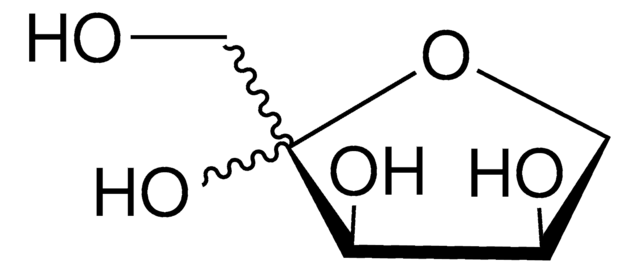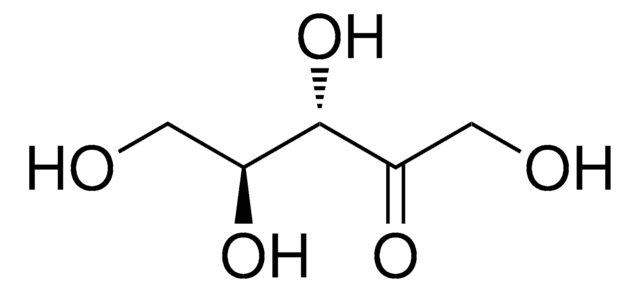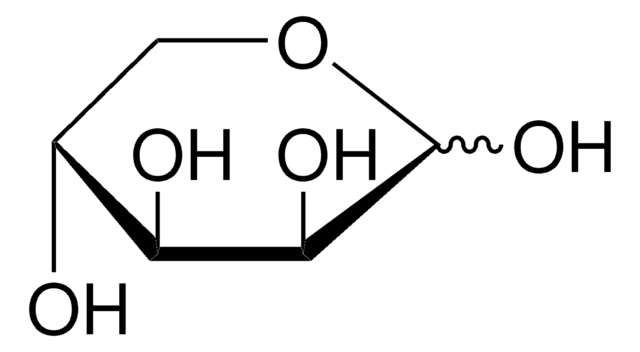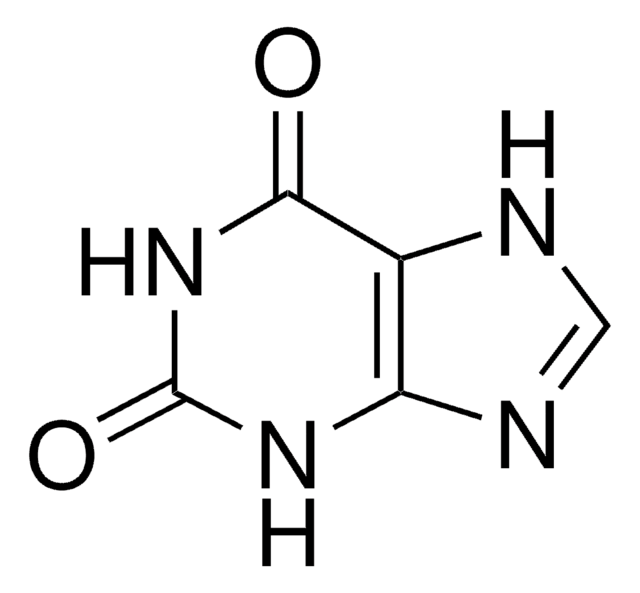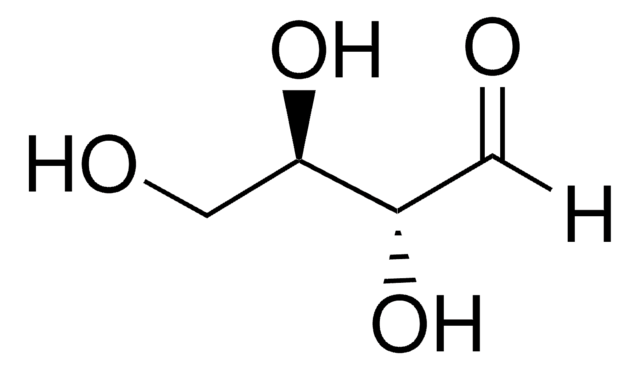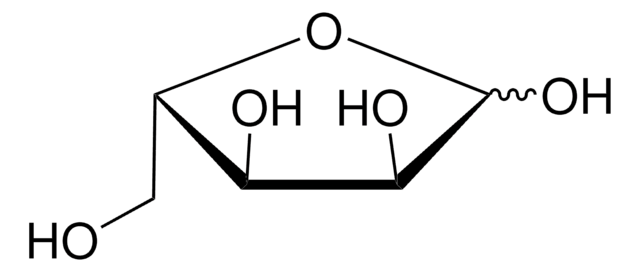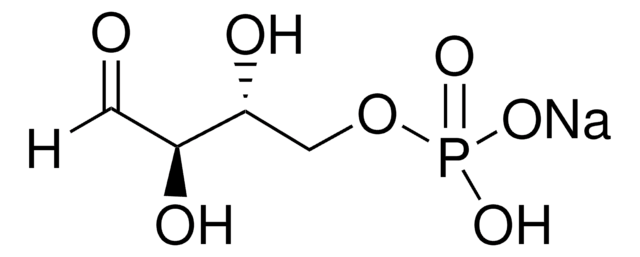X4625
D-Xylulose
≥95% (HPLC), syrup
Sinonimo/i:
D-threo-Pentulose
Autenticatiper visualizzare i prezzi riservati alla tua organizzazione & contrattuali
About This Item
Formula empirica (notazione di Hill):
C5H10O5
Numero CAS:
Peso molecolare:
150.13
Beilstein:
1723052
Numero MDL:
Codice UNSPSC:
12352201
ID PubChem:
NACRES:
NA.25
Prodotti consigliati
Livello qualitativo
Saggio
≥95% (HPLC)
Stato
syrup
tecniche
HPLC: suitable
Colore
faintly yellow
Solubilità
water: 50 mg/mL, clear, faintly yellow to yellow
Temperatura di conservazione
−20°C
Stringa SMILE
OCC1(O)OC[C@H](O)[C@H]1O
InChI
1S/C5H10O5/c6-2-5(9)4(8)3(7)1-10-5/h3-4,6-9H,1-2H2/t3-,4+,5?/m0/s1
LQXVFWRQNMEDEE-PYHARJCCSA-N
Cerchi prodotti simili? Visita Guida al confronto tra prodotti
Categorie correlate
Azioni biochim/fisiol
D-xylulose is a monosaccharide, converted from xylitol in the glucuronate pathway.
Altre note
To gain a comprehensive understanding of our extensive range of Monosaccharides for your research, we encourage you to visit our Carbohydrates Category page.
Codice della classe di stoccaggio
10 - Combustible liquids
Classe di pericolosità dell'acqua (WGK)
WGK 3
Punto d’infiammabilità (°F)
Not applicable
Punto d’infiammabilità (°C)
Not applicable
Dispositivi di protezione individuale
Eyeshields, Gloves
Scegli una delle versioni più recenti:
Possiedi già questo prodotto?
I documenti relativi ai prodotti acquistati recentemente sono disponibili nell’Archivio dei documenti.
I clienti hanno visto anche
Tien Anh Ngo et al.
Journal of the American Chemical Society, 138(9), 3012-3021 (2016-02-18)
We report the construction of an artificial enzyme cascade based on the xylose metabolic pathway. Two enzymes, xylose reductase and xylitol dehydrogenase, were assembled at specific locations on DNA origami by using DNA-binding protein adaptors with systematic variations in the
Misun Lee et al.
Biochemistry, 56(45), 5991-6005 (2017-10-19)
Xylose isomerase from Piromyces sp. E2 (PirXI) can be used to equip Saccharomyces cerevisiae with the capacity to ferment xylose to ethanol. The biochemical properties and structure of the enzyme have not been described even though its metal content, catalytic
Jenny P Glusker et al.
Acta crystallographica. Section D, Biological crystallography, 66(Pt 11), 1257-1261 (2010-11-03)
A description is given of the results of neutron diffraction studies of the structures of four different metal-ion complexes of deuterated D-xylose isomerase. These represent four stages in the progression of the biochemical catalytic action of this enzyme. Analyses of
Ye-Wang Zhang et al.
Applied microbiology and biotechnology, 90(2), 499-507 (2011-01-20)
Rare sugars have many applications in food industry, as well as pharmaceutical and nutrition industries. Xylitol dehydrogenase (XDH) can be used to synthesize various rare sugars enzymatically. However, the immobilization of XDH has not been performed to improve the industrial
Nichole F Huntley et al.
PloS one, 13(10), e0205913-e0205913 (2018-10-26)
It is important to understand if, and to what extent, the pig can utilize xylose as an energy source if xylanase releases free xylose in the small intestine. The experimental objectives were to determine the effects of industry-relevant dietary xylose
Il team dei nostri ricercatori vanta grande esperienza in tutte le aree della ricerca quali Life Science, scienza dei materiali, sintesi chimica, cromatografia, discipline analitiche, ecc..
Contatta l'Assistenza Tecnica.